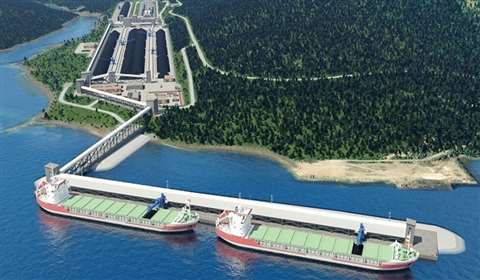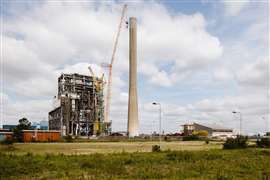Construction starts on €1bn port in Murmansk
17 September 2021
Lavna Commercial Sea Port project to include deep-water berth and railway infrastructure
 Impression of the proposed Lavna Commercial Sea Port in the Murmansk region of Russia. Picture courtesy Gov-murman.ru
Impression of the proposed Lavna Commercial Sea Port in the Murmansk region of Russia. Picture courtesy Gov-murman.ru
Construction work has started on a large commercial seaport in the Murmansk region in the far northwest of Russia.
The primary purpose of the port will be to handle shipments of coal, although the Murmansk regional governor, Andrei Chibis, said the master plan being developed anticipates its development as a “universal port”, handling materials including anthracite, mineral fertilizers and containers.
Within the current plan, a deep-water berth of 660m in length will be constructed – large enough to accommodate two bulk carriers with deadweight of up to 150,000 tonnes.
The main contractor on the project, JSC Mosenergo Heat Energy Company, estimates there will be up to 1,000 workers on site during the construction process, with the peak being spring-summer 2022 and the first shipments leaving the port in 2023.
Once operational, the port will have a total of around 660 personnel on site.
As part of the project, Chibis said, new railway infrastructure would need to be constructed. When fully commissioned, the port is expected to have a capacity of around 18 million tonnes per year, running up to 2043.
The current total investment in the port project is said to be cRUB89 billion (c€1 billion).
STAY CONNECTED


Receive the information you need when you need it through our world-leading magazines, newsletters and daily briefings.
CONNECT WITH THE TEAM










